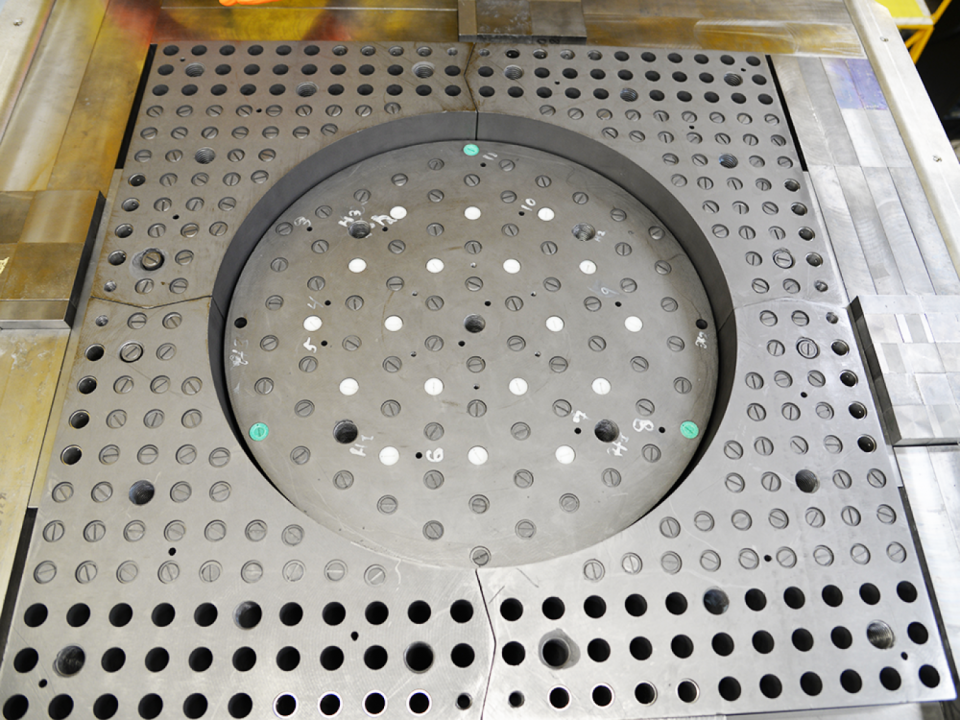U.S. represented at international meeting on nuclear security
During the 2024 International Conference on Nuclear Security (ICONS) in May, representatives from the U.S. Department of Energy and the National Nuclear Security Administration discussed U.S. nuclear security priorities, noted their achievements and those of U.S. partners, and explained how to tackle the security challenges of today and tomorrow.
The conference: ICONS, sponsored by the International Atomic Energy Agency, is held every four years in Vienna, Austria. About 2,000 people representing more than 130 countries gathered at this year’s conference, which the NNSA called a key event for the global nuclear security community. ICONS focused on multiple topics, including policy, law, and regulations; emerging technology; physical protection, emergency preparedness, and response; and capacity-building.
Participants: DOE deputy secretary David Turk led the U.S. delegation and was joined by many DOE and NNSA nuclear security professionals, as well as representatives from the Departments of State and Homeland Security; the Nuclear Regulatory Commission; the National Security Council; the Federal Bureau of Investigation; and various labs, plants, and sites throughout the DOE/NNSA enterprise. Turk delivered the U.S. National Statement at the event.
Among members of the senior U.S. delegation members were Homeland Security advisor Elizabeth Sherwood-Randall; ambassador Bonnie Jenkins, undersecretary for Arms Control and International Security at the State Department; ambassador Laura Holgate of the State Department’s Vienna Office of the United Nations and to the IAEA; and NRC chair Chris Hanson.
IAEA initiative: Because of the growing interest in nuclear power to combat climate change, the NNSA hosted an event at the conference about security and the IAEA’s Atoms4NetZero initiative. Speakers outlined U.S. resources available to support the global expansion of nuclear power with an emphasis on prioritizing safety, security, and nuclear safeguards. Representatives from Ghana and the Philippines shared their perspectives as countries on the cusp of nuclear development. At this event, the NNSA's acting principal deputy administrator Corey Hinderstein announced that 28 countries had signed a joint statement on the role of nuclear security in the sustainable expansion of nuclear power.
“ICONS provides a unique opportunity for diverse stakeholders from governments, regulators, industry, academia, and civil society from around the world to exchange ideas on nuclear and radiological security and strengthen their networks,” said Hinderstein. “Importantly, the two-day ministerial component of ICONS brings high-level attention to nuclear security and offers a platform for countries to highlight nuclear security progress and make new commitments.”
In addition: The DOE/NNSA signed numerous agreements at ICONS:
- A joint statement with Italy announcing their intent to move forward on high-enriched uranium and plutonium minimization. Specifically, the focus is on completing the analyses of converting Italy’s TAPIRO reactor, developing a plan for minimizing inventories of HEU and Pu, and exploring approaches for dealing with HEU-thorium blends.
- A memorandum of understanding with the Australian Nuclear Science and Technology Organization on nuclear security, nonproliferation, and emergency preparedness and response.
- A joint statement with Atomic Energy of Canada concerning the minimization of HEU and Pu.
- A joint statement with Norway to advance the downblending of Norway’s HEU and deployment of the Mobile Melt-Consolidate system.
- A joint statement from the United States and the European Union on enhancing radioactive source security by building capacity.
Other notable DOE/NNSA-related meetings included the following:
- An update from the United States and the EU on how joint efforts have improved nuclear security with Nigeria, their mutual partner.
- An event showcasing research and efforts of the United States, the World Institute for Nuclear Security, Ukraine, and Norway to counter and respond to nuclear security threats to nuclear facilities during armed conflict. It also outlined how the rupture in norms against attacks on nuclear facilities requires new approaches to security and emergency preparedness and response.
- A discussion of the international replacement of high-activity radioactive sources with machine-based radiation devices (like X-ray machines) and scientific studies assessing those technologies. The effort complements a similar domestic NNSA program.
- An event focused on mitigating insider threats in nuclear security and outlining how IAEA member states can participate.
- A final report from IAEA director general Rafael Grossi on the U.S. International Physical Protection Advisory Service mission.
- A discussion of the protection of nuclear materials while they are in transit.
- Numerous papers, studies, and other scholarly work on the topic of nuclear and radiological security and emergency preparedness and response.
Side events: Leaders also held bilateral meetings with counterparts to discuss U.S. nuclear security priorities and collaboration, including meeting with the IAEA, Belgium, Brazil, China, Israel, Japan, Romania, Ukraine, and South Africa.
The next ICONS is scheduled for 2028.




.jpg)
